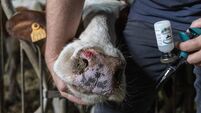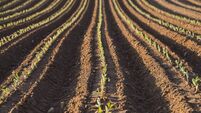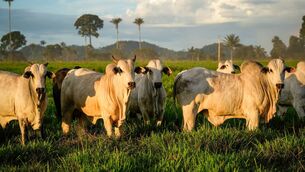First hand-held horse blood test launched

Developed by former junior international showjumper for Ireland Heinrich Anhold, StableLab can produce a result within minutes, showing if a horse has an viral or bacterial infections, or not.
A blood test cartridge used at the horse’s side gives a simple-to-read colour result, indicating clearly the presence of serum amyloid A, which only presents in a horse’s blood when an infection is present.
Previously, these tests had only been carried out in laboratories.
“You don’t need to send your blood sample to a lab and you don’t need a PhD to interpret the results,” said Dr Anhold.
StableLab will later this year launch a hand-held reader to allow users quantify results, and an iPhone app for storing information and building infection trends over time.
The company is also working on a blood-test cartridge test for tying up, a muscle disease in horses.
Already, showjumpers are using the test to screen for viruses after travel.
Vets might use it to check for lung infections, or rhodococcus equi infections in foals.
The problem of weed seeds being redistributed over the fields as chaff during the harvest is being researched in Australia.
Four methods have been used to capture and destroy weed seeds at crop harvest.
In one method, chaff carts, pulled behind a combine harvester, collect the weed seed and discarded plant material. These materials are burned or used as livestock feed.
In another method, a chute disperses the seed from the harvester into narrow windrows, which are burned.
A baler attached to the harvester is another method of disposal, creating bales of chaff and straw residue for livestock feed (this is the method of 70% of growers in the major grain-production state of Western Australia).
Finally, a mechanical device (the Harrington seed destructor) processes crop chaff with a cage mill. This device can destroy 95% of the weed seed in chaff. The aim is to restrict the annual production of weed seeds, which perpetuates weed infestations in global field crops.
One of the potential advantages is that removal of most of the weed seed will lessen its ability to develop resistance to herbicides, which has become widespread among weed species, and is negatively affecting agriculture, particularly in Australia.
Ryegrass and wild radish that have developed resistance to multiple herbicides dominate fields in Australian crop production.
The only fields that reached the researchers’ targeted goal of low-weed density were those that employed the weed-seed harvest system in conjunction with early-season herbicides.
In fields with high, annual, ryegrass-weed infestations, herbicide-focused weed management reduced infestation from 35-50 to less than 10 plants per square metre.
But there was less than one weed per square metre where weed-seed harvesting was also used.
This low-weed density allows greater flexibility in crop choice, seeding time, and herbicide use, while minimising herbicide resistance.










